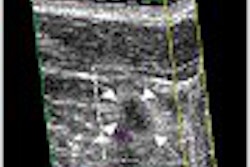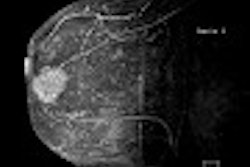The mammography markets in North America, Japan, Latin America, Eastern Europe, and Asia-Pacific reached $241.2 million in 2002, an annual growth rate of approximately 18.2% over 2001, according to market research and consulting firm Frost & Sullivan. Growing demand, along with the higher prices commanded by full-field digital mammography (FFDM) systems, will drive the market to $528.2 million by 2009, with a compound annual growth rate (CAGR) of around 10%, according to the San Jose, CA-based firm.
"While growing very slowly in (Latin America, Eastern Europe, Asia-Pacific) and Japan, flat-panel and direct-capture digital mammography is growing in the high double-digit range in North America," said Frost market analyst Antonio García. "Since North America is the largest single market for mammography, this is providing a considerable boost for the aggregate market."
He made his comments during an industry briefing last week. Frost & Sullivan expects to release its analysis of the European mammography market in June.
Despite the hype surrounding FFDM, revenues from analog systems still outpace digital units. In 2002, new analog mammography screening equipment generated $142.7 million in sales, compared with $69.6 million from digital screening (flat-panel, slot-scanning, and computed radiography) systems. Digital spot mammography systems (both add-on and dedicated prone units) generated $28.9 million in sales last year.
By 2009, however, FFDM units are expected to contribute 70% of mammography revenues, compared to only 18% for analog systems. This conversion will be driven by economic factors such as low reimbursement rates, and by operational issues such as facility consolidation and the need to boost throughput, García said.
FFDM units are four to five times more expensive than analog systems, driving up revenues even as overall mammography unit sales are declining, García said. In terms of procedures, analog systems performed 34.6 million screening studies in North America in 2002, compared with just 1.6 million on flat-panel digital systems.
Regional differences
Overall, the North America mammography market generated $203 million in revenues in 2002, more than six times Japanese sales of $30.5 million. While breast cancer rates in Japan are not as alarming as North American statistics, they are cause for increasing concern, according to García.
"This is expected to give an impetus to mammography equipment sales in this country," he said. "CR mammography is the version of digital mammography that is favored and has taken hold in Japan. This is expected to eventually overtake analog mammography as the largest market segment in Japan."
The developing rest-of-the-world segment (Latin America, Eastern Europe, and Asia-Pacific) produced only $7.7 million in sales in 2002. Because health systems in these countries tend to have other priorities, budgets leave little room for purchasing new or state-of-the-art mammography equipment, he said.
As such, the market for used and refurbished mammography systems has a more significant impact on new system purchases in these countries compared to other regions. Rising awareness of breast cancer in these developing regions could also boost sales of analog systems, García said.
By Erik L. RidleyAuntMinnie.com staff writer
April 30, 2003
Related Reading
Frost report pegs MRI market growth at 21% in 2002, April 22, 2003
PET/CT growth sparks gains in U.S. PET market, April 15, 2003
Imaging market notches 10% growth, with no sign of fatigue, February 13, 2003
F & S sees larger North America mobile imaging market, December 12, 2002
Copyright © 2003 AuntMinnie.com




















